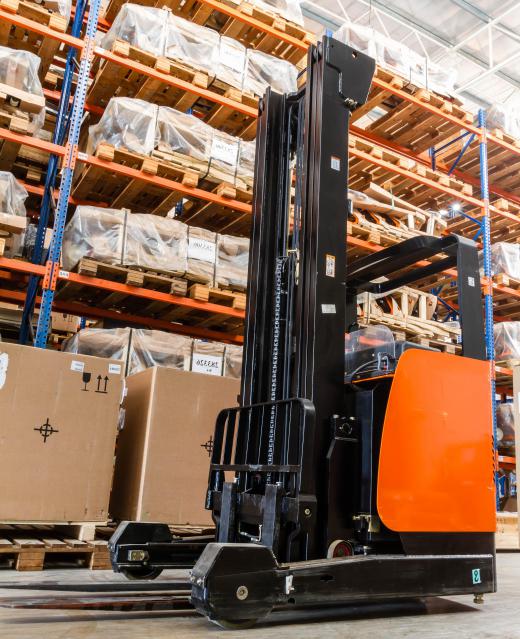A forklift cage is sometimes known as a work platform or a man basket, as it allows a person to be lifted safely by the fork blades of a forklift to a height high off the ground. The forklift cage is almost always made from very strong metal such as steel, and it features a flat floor with walls or railings on all sides of the platform. The back of the cage will often feature a high back that protects the worker from the forklift's lifting mechanisms, and the front of the cage will feature a door or gate that allows the worker to come and go safely.
In order to safely lift the forklift cage, an operator must mount the cage properly to the fork blades. This is done by sliding the fork blades into pockets on the bottom of the forklift cage. The blades slide into the pockets until the blade backing presses against the back wall of the cage, and the forklift cage itself is secured in place using chains. Once the forklift is in place and the chains are secured, the cage can be lifted safely. A worker can enter the cage and close the gate behind him, securing prevent falls or other types of accidents.

While the worker is in the cage, he or she usually wears a safety harness that can be affixed to the walls of the forklift cage using a carabiner or hook. This will prevent any accidents such as falls while the person is lifted in the cage. It is likely that the cage will also feature tool trays or other work surfaces, though many cages do not. The walls or railings of the cage are usually set at about hip-height, though the walls can be taller for added safety. Lower walls allow a worker to bend forward while working.
The construction of the forklift cage must be exceptionally strong to prevent crushing accidents. Durable metals are usually used to prevent the worker from being injured should the lift press the cage too hard against a solid object. The floor of the cage usually features some sort of texture, either in the form of adhesive strips or diamond plating, to allow for better traction while walking or otherwise moving within the cage. Open railings allow a worker to slide the carabiner along the length of the rail, which in turn allows for greater mobility.
